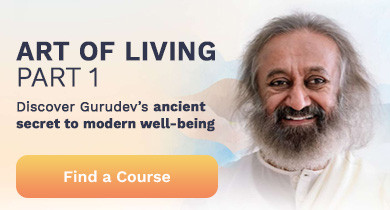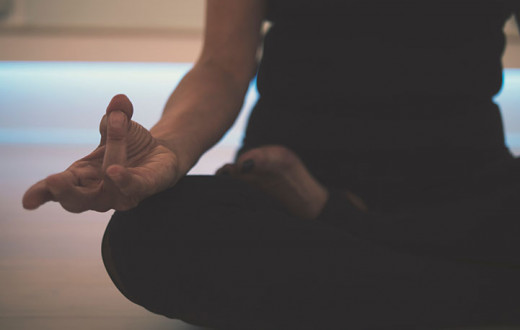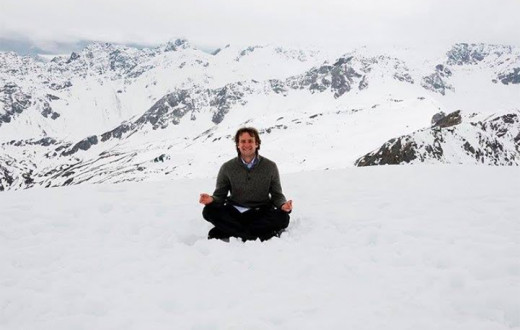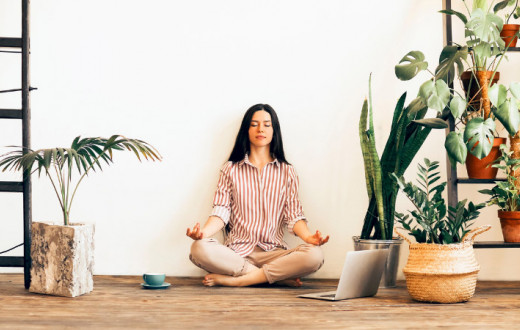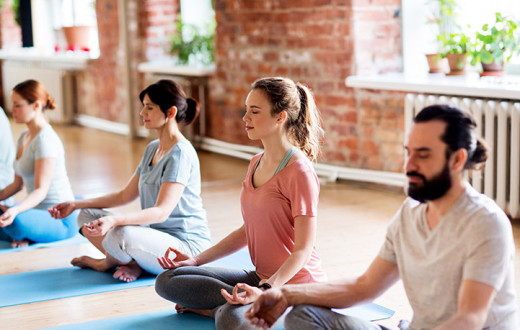By Elizabeth Herman
If your mind and body can’t seem to stop being busy and fidgety, give walking meditation a chance to calm you down! You can practice anytime and anywhere.
You’ve tried meditation, but you find it hard to keep your body so still for so long. Have you considered using meditation while you walk? Research on walking and meditating shows that they improve moods in young adults.
Meditation while walking comes from several forms of Buddhism. It helps the body to revive itself for those who sit for long periods of time. It involves taking it slow and observing fully with your senses and attention. You can incorporate the mental elements of sitting meditation into walking meditation.
What is walking meditation?
Walking meditation is a variation of mindfulness practices. There are intentional walking meditation locations, such as labyrinths or gardens, but you can practice it anywhere.
It’s an alternative to sitting meditation. It can bring mind and body into sync with each other. You can weave movement and walking into your schedule between sitting meditations. This will encourage you to be comfortable with meditating more. It will bring about an intensive cleansing of stress and tension in your system.
What is a walking meditation practice?
A regular practice of walking meditation helps you make a habit of relaxing. It allows your body to feel free and encourages your mind to rest and rejuvenate itself. You can walk in a labyrinth, a beautiful natural area, or in the confines of your home.
Establishing a walking meditation practice is a matter of setting aside time to walk. In my practice, I walk 30 minutes a day, usually near home. It makes me feel much more energetic. It helps me to keep up with my sitting meditation practice, and with my much needed sleep patterns.
You can use it as a supplement to a sitting meditation practice. At the same time, it’s a form of exercise and a source of mental and emotional therapy. You can use it to appreciate the natural beauty that exists all around you, no matter where you live.
Benefits of walking meditation
The following health benefits come to you from a regular walking meditation practice:
Improves your balance
Reduces your lethargy, anxiety, and/or depression
Supports your blood circulation, especially to the legs
Increases your energy levels
Boosts your digestion and prevents constipation
Stabilizes blood sugar levels and circulation in diabetes patients
Enhances your brain activity and feelings of well being
Helps you sleep better
Makes exercise more pleasant and interesting
Inspires new ideas, problem-solving skills, and creativity
How do you do walking meditation?
Here are seven steps toward your walking meditation:
Choose a location. Modern cultures have rediscovered and adapted an ancient symbol known as the labyrinth. It represents inclusion and healing. A meandering, circular pathway leads toward and away from a clear center. Labyrinths all over the world are usually used for walking meditations. They assist you in finding peace and clarity. You can use them for managing stress, decision-making, self-exploration, and reflection. A great example of a Labyrinth stands on the grounds of the Art of Living Retreat Center.
Nature walking. You can find a walking path in many natural areas. The plants and animals in your yard and neighborhood can provide an endless focus while you walk. Begin your walk with the intention to observe everything around you. Realize that it and you are all part of nature.
Slow down. Combine seated meditation with walking meditation. Stay in the present moment by taking in and letting out each individual deep breath, one at a time.
Engage your senses. Feel the fresh air as it circulates around you. Look around with your eyes and listen with your ears. Pay close attention as the sunlight and sounds wake up your consciousness. Feel the increase in your energy and the life force flowing through you.
Take steps. Notice the parts of each step. Use your arms and hands for balance with awareness. Every moment can become a precious opportunity to observe. Enjoy the movements of your right foot and your left foot and every other part of you.
Focus your attention. Observe your mind, senses, body, and environment all at the same time. Everyday life becomes more vibrant and joyful when you practice intentional stress reduction.
Integrate walking meditation into your daily life. You can escape stress and find peace by making a commitment to observing your walking every day. A sitting meditation practice can become easier alongside a walking meditation practice. 20-30 minutes per day is a reasonable amount and will make a big difference in your life!
Walking meditation and yoga are closely related to sitting meditation. Deep breathing is an important part of all three practices. Use all of them to complement each other for the sake of your own physical and mental health!
There are many more ways to get into meditation and experience its benefits. Check out Beyond Breath - a free online session with a live instructor. The session includes guided breathwork and meditation. It will help you get ready to learn SKY Breath Meditation. This helps millions of people worldwide to feel relaxed and healthier.
Elizabeth Herman is a long time meditator, a trained yoga teacher, and a PhD in English, with concentrations in Rhetoric and Composition, and Literature. She offers writing support to clients, teaches locally, and volunteers for a better world.

